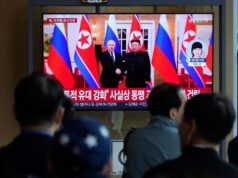By
Mihir Shah
Yesterday, The Hindu published a report on the Rafale deal—claiming that the price settled for was too high, that the government violated laid-down procedures and guidelines, and that an opportunity to negotiate a better price by leveraging a competing offer from a competing vendor was foregone. The report contains some glaring assertions that are not borne out by the facts. What follows is a breakdown of five major goof-ups.
Falsehood No 1:
“Modi’s decision to buy 36 Rafales shot the price of each jet up by 41%”
Fact:
The 2007 bid price is not directly comparable with the 2016 contract owing to the price inflation and exchange rate variation that occurred in the nine intervening years. In order to account for these risks, the original bid contained an escalation clause that steadily raised the price of the aircraft every year. If the value of the 2007 bid, on a per aircraft basis, were adjusted to 2016—the year the Rafale agreement was formally signed—it would have resulted in a price of €100.85 million for each bare-bones aircraft. This was higher than the €91.7 million that was negotiated by the government in 2016. Thus, the government’s claim of a 9% discount makes economic sense, while The Hindu’s claim of 41% escalation does not.
Moreover, the debate over raw numbers neglects a vital point: that the comparison isn’t really apples-to-apples. Dassault’s 2007 bid was for an F3 standard Rafale. The current deal is for a more advanced variant, as well as India-specific enhancements that boost its effectiveness. Claiming a 41% price escalation between the two would be equivalent to comparing the 2007 price of a Maruti Swift LDi with the 2016 price of a customised Swift ZXi, and concluding that the price of the car has shot up.
Falsehood No2
The F3-R Rafale possesses “practically the same configuration and capabilities” as the older F3 model… “Dassault claimed a €1.4 billion cost for the ‘design and development’ of… additional capabilities in the form of hardware as well as software that had been specified by the Indian Air Force all along.”
Fact:
We know from earlier reports on the topic that the additional capabilities went beyond the Indian Air Force’s specifications in the MMRCA tender. The Economic Times reported in February that “The Rafales being procured under the current deal has a better weapons suite such as the game-changer METEOR missiles”. This was also corroborated by a report published in India Today in the same month.
Also, the F3-R standard Rafale represents a vast improvement over the F3. It can carry the long-range Meteor air-to-air missile (which significantly outranges the MICA missile that the F3 could carry, as well as boasts superior terminal-phase kinematic performance), upgraded AASM smart bombs which can be guided via in-built infrared seekers (in addition to the inertial and GPS guidance the legacy versions had), and the Talios laser designation pod; whereas the F3 could not. It also sports improved avionics, upgraded software, improved flight controls and other enhancements that give it a significant edge over the F3 standard Rafale. These enhancements were so significant, that the French government budgeted €1 billion for the research and development that went into them in 2014.
It was also reported earlier that the India Air Force’s Rafales would not be restricted to the F3-R standard. The agreement makes provision for further improvements that are slated to be implemented under the F4 standard to be transferred to the Indian fleet as well.
Falsehood No 3:
“Big increase in Rafale’s price came because a deal bypassing mandated procedures and made in the face of official objections”
Reality:
Not a single example of any arm of the government “bypassing mandated procedures” has been presented in the report. The author has portrayed a majority decision by the Indian Negotiating Team (INT) in the face of objections by a minority of the team’s members as a violation of procedures, and guidelines, but this is not true. As the Ministry of Defence states in its reply, the views and objections of individual committee members are always recorded, and committees vote on the final decision. Far from being a violation of procedure, this is collective decision-making, done in the best traditions of a democratic set-up.
Falsehood No 4:
“Mr Parrikar shied away from his responsibility and… passed the buck, to the Cabinet Committee on Security”
Reality:
The progression of the final agreement—from the INT’s approval to the DAC’s review to the CCS’s—ratification is what we call “following the process”, as outlined in the 2013 Defence Procurement Procedure (DPP). The Defence Minister did not “pass the buck”. Had he decided to unilaterally override any committee’s (which he was empowered to do, but chose not to) it would have been seen as improper, and only prompted further allegations of wrongdoing and dictatorial decision making.
Falsehood No5:
“The opportunity to make full use of the leverage provided by the new offer from the Eurofighter Consortium was lost.”
Reality:
The DPP makes no provision for “leveraging” one bid against the other, and could very easily be interpreted as prohibiting it. Equipment is to be purchased either by soliciting competitive bids from multiple vendors, or directly from friendly foreign countries via an Inter-Governmental Agreement (IGA). The latter route was chosen for the Rafale deal considering the Air Force’s urgent needs. There was no path to leveraging an offer from Eurofighter (a vendor) against one from the government of a friendly nation (France).




